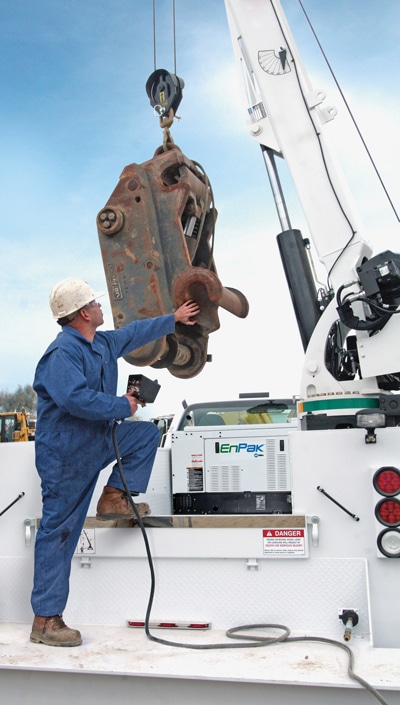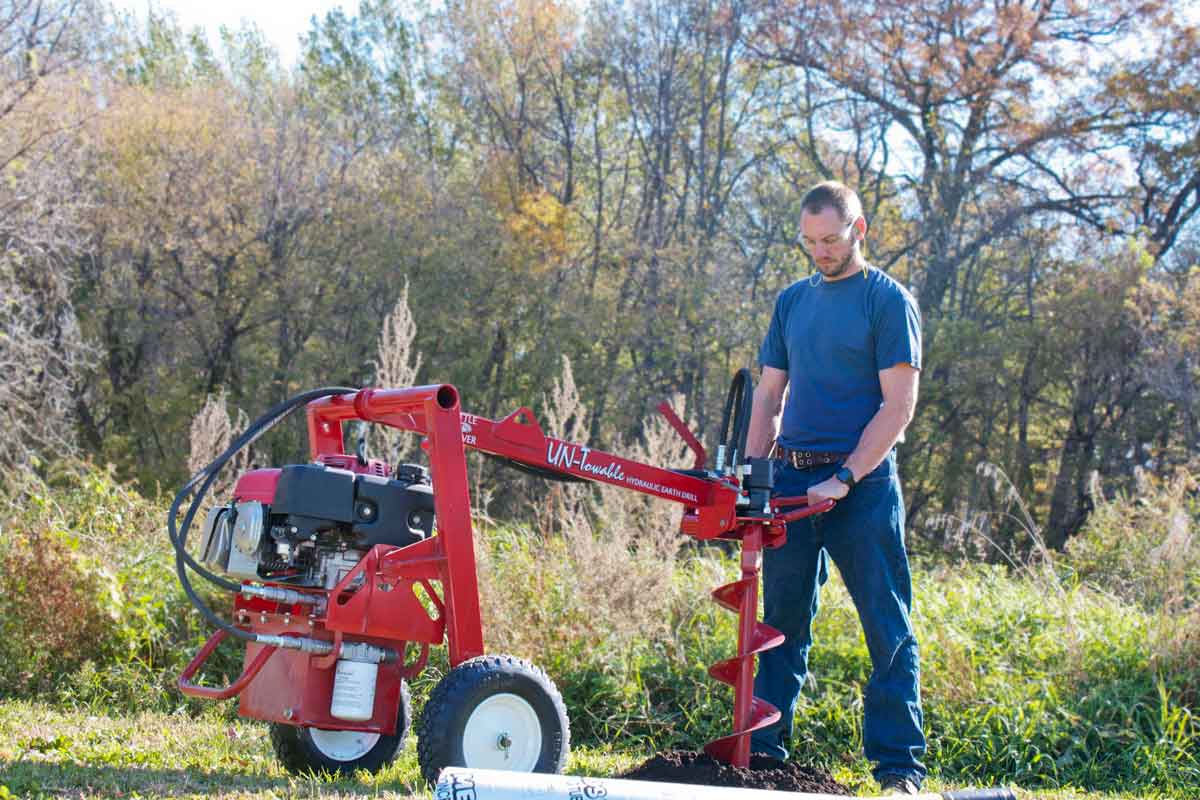Mounting Welders, Generators and Other Combo Equipment on Service Vehicles
In a column last May, we looked at recent evolutions in welder/generator/air compressors — and similar combination equipment — and what that meant to field service applications (you can read that column here: http://bit.ly/1T9oBxb). There have not been any revolutionary enhancements to this equipment since last spring. In another recent column (http://bit.ly/1XzDSZo) we looked at point-of-use controls and how that was changing field welding and fabrication.
Those two articles combine to present a respectable overview of the equipment currently available to field/mobile welding applications (ancillary tools such as wire feeders, grinders and plasma cutters not-withstanding). What’s the best way to get those tools to the field, though? Is it just as simple as throwing a welder/generator in the back of a pickup truck? In some cases, yes. But as this equipment becomes larger, features greater functionality and renders other tools obsolete, the physics change: How is this tool affecting weight distribution on my truck? Can I fit everything I need? Does it make sense to work with a truck upfitter to design a custom service body? Or would a trailer be better? In this article, we’ll take a look at the considerations each equipment owner should take into account when outfitting a mobile maintenance/fabrication vehicle for field work.

Sidepack mounting of welder/generator/air compressors allows for adequate air flow around the machine
Application and Output Requirements Affect Weight
Size and weight are obvious considerations — and those metrics vary based on required output of the machine. The Lincoln Ranger 225 welder/generator weighs in at 514 lbs and can easily fit in the back of a pickup truck, on the side pack of a service truck or on a custom-built welding trailer. On the larger end of the spectrum, the Miller Big Blue 800 Duo Air Pak welder/generator is a dual-operator power source that weighs 2,095 lbs and requires more deliberate placement and positioning.
In between, there are combination units that provide three different sources of power — welding, electricity and air — that generally come in below 1,000 lbs. Additionally, manufacturers such as Miller (EnPak) and Vanair (Air N Arc I 300) have developed systems that also provide hydraulic power for running tools such as service cranes — these generally weigh less than 1,000 lbs, but require integration and layout with an experienced truck outfitter. EnPak, for instance, plumbs directly into the truck’s fuel tank and electrical system. Professional guidance is suggested.
“The customer is going to need to know their welding requirements to do the job [to establish which product is selected],” says Tom Wibben, sales and service manager with Maintainer, a company specializing in service truck bodies. “The nice thing about working with a body fitter initially is understanding the other tasks that are going to be performed at the jobsite. Such as: Where in relationship to placing it on the truck is it going to be used to best help the mechanic or welder? What other equipment do they need to carry to get it best placed ergonomically and best help the technician do his job?”
A big part of the equation is weight. Very simply, an uneven distribution of weight can create an unstable and possibly unsafe vehicle moving down the road at highway speeds.
“Weight distribution on the truck is an extremely important safety consideration,” says Travis Purgett, product manager — Power Systems Division, Miller Electric Mfg. Co. “It is generally considered best practice to place heavier units between the axles. Additionally, one must consider the [truck] manufacturer’s recommendations for weight capacity. It is important to consult resources such as a truck upfitter or chassis manufacturer for recommended load distribution.”
With smaller units in pickup trucks, recommended placement is pretty simple: Center of the truck bed with a minimum of other tools and equipment piled around it. Similarly, small- to mid-sized welder generators can fit easily into either the open center area of a larger service truck or up on its side pack. Placement and engineering become more complex as the units get larger.
“Location plays an important role,” says Purgett. “Theoretically, the machine can be mounted anywhere where there is room, but make sure the unit has adequate air flow for cooling. In general, we recommend an 18-in. perimeter around the machine to ensure optimal performance. Tighter quarters may be acceptable based on the machine air flow pattern, but this should be verified before installation.”
Access to Controls, Maintenance Points
Keep in mind, when placing larger combination equipment, how the placement of that tool will affect access and maintenance. For instance: With larger engine driven equipment, it may make sense to place that machine in the service body directly behind the cab. This ensures even, centered weight distribution. In these cases, a truck outfitter will create a ground-level access point on one side of the truck body for accessing controls. But additional action may be required to make that unit accessible for maintenance.
“In the last couple of years, we’ve tried to mount the welders on roll-out trays that can be used — potentially for operation if they are mounted in a real close area or in a van area that it needs to get out for air flow for cooling — but more so that you can roll it out to get at it to service,” says Wibben. “You forget about it, it gets so tucked in and buried that you can’t get in to service it. This makes it convenient for the operator to run and service at the same time.”
Chris Sloan, marketing manager at Vanair, points out the importance of access to controls for units mounted either on the side pack of the truck or deeper into the service body without ground level access. A common safety theme in all construction applications is minimizing exposure to harmful activities. Climbing in and out of the bed of a service truck to make adjustments to weld settings or other outputs creates another opportunity for that mechanic to trip, fall or otherwise hurt themselves. In these cases, either remote control panels accessible from the ground or remote controls (corded or wireless) stationed with the operator are recommended.
“When mounting the equipment on a side pack of a truck body, the need to enter the load space to start/stop or switch functions is eliminated using a remote control panel system,” says Sloan. “Eliminating the number of times an operator climbs into the load space helps prevent safety concerns and increases the overall performance of the operator too. Offering a remote control panel so the operator doesn’t have to constantly climb back and forth into the truck’s load space to control functions is a plus.”

Truck-integrated systems such as an EnPak allow field mechanics to run hydraulic cranes with the main truck engine turned off.
Storage and Usability
Whether working with a truck upfitter or designing something in-house, it’s important to take into account all of the ancillary systems and components needed for the welding process. Where will you store and secure your shielding gas in a safe manner? Do you have compartments where wire feeders and plasma cutters can be easily stowed to take best advantage of space in your truck or trailer? Also consider adding retractable reels for welding leads, air hoses and power cords.
“Mounting welding lead reels on the truck versus just wrapping up cable — that lead reel can be stowed away to make it a little more efficient in their operation,” says Wibben.
Reducing Truck Idling
When considering mechanics truck applications where hydraulic tools are required, those applications have historically been run off of the truck’s PTO, which requires the truck’s engine to be running. Machines like the EnPak and the Air N Arc I 300 perform those same functions off of a smaller horsepower engine while simultaneously reducing the engine hours put on the higher horsepower engine of a truck.
“Tier 4 Final compliance and anti-idling laws have become major topics over the last few years,” says Sloan. “Allowing the truck to [not] idle helps save on the wear and tear of the truck’s chassis, as well as reduces the truck’s fuel consumption.”
Advantage of Working with a Truck Upfitter
We asked Travis Purgett at Miller to give us his take on the advantages of working with a truck upfitter to design the optimal truck for field maintenance and fabrication: “These trucks get equipped with additional tools and equipment. The truck upfitters are able to mix and match the equipment necessary on the truck to maximize the space and make the trucks as efficient as possible. Often times, they are also able to purchase equipment direct to save money and reduce complexity. An upfitter is better trained and more knowledgeable than most about state and federal guidelines and standards. This allows them to create a truck to fit the need of the operator while staying compliant with organizations such as MSHA, OSHA, state DOTs and other governing agencies.”



Comments are closed here.